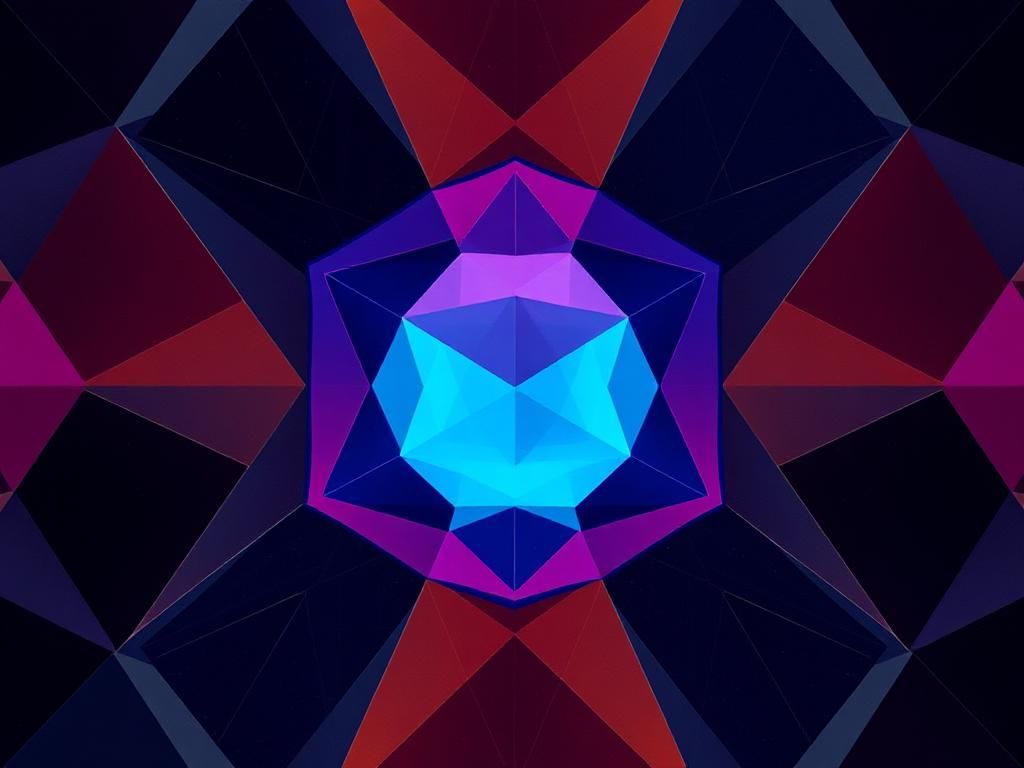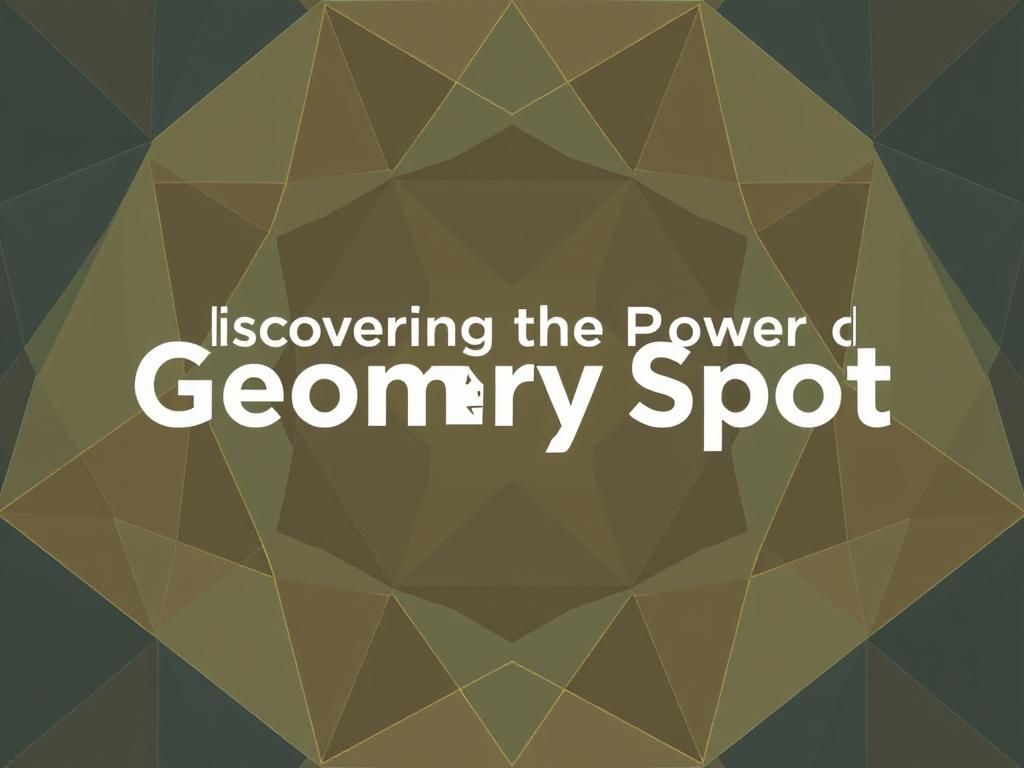Geometry, a branch of mathematics that deals with the properties and relationships of points, lines, surfaces, and solids, plays a pivotal role in education. As educators seek innovative tools to enhance learning experiences, the geometry spot has emerged as an effective method for engaging students in this dynamic field. By leveraging interactive and visual techniques, Geometry Spots allow learners to explore geometric concepts in an accessible and enjoyable manner, making them invaluable resources in classrooms across the globe.
This article aims to provide a comprehensive understanding of the geometry spot. We will cover its definition, significance, and the various features that make it an essential tool for educators. Additionally, we will discuss the benefits of using Geometry Spots, strategies for implementing them in curricula, and challenges educators may face while integrating these resources into their teaching practices. Finally, we will explore the future of Geometry Spots and how technological advancements can further enhance learning outcomes.
The Importance of Geometry in Education
Foundations of Geometry
Basic concepts of geometry form the building blocks of mathematical knowledge. Fundamental ideas such as points, lines, angles, and shapes are crucial for students as they progress through their studies. Geometry is not an isolated discipline; it connects with other mathematical topics like algebra and calculus. For instance, understanding geometric shapes leads to the application of algebraic formulas in calculating area and volume. This interconnectedness underscores the importance of cultivating strong geometric foundations for students, facilitating their abilities in various branches of mathematics.
Role of Geometry in Problem-Solving
The study of geometry fosters important skills in critical thinking and logical reasoning. Engaging with geometric problems encourages students to develop strategies for problem-solving, which are applicable in real-world scenarios. From architecture and engineering to art and design, geometric principles are utilized extensively in professional fields. Thus, reinforcing these concepts through effective tools like the geometry spot is essential for preparing students for future challenges.
Geometry Spot: Features and Functionality
What is Included in a Geometry Spot?
A geometry spot typically offers a range of interactive tools designed to enhance the learning experience. These tools may include:
- Shape modeling: Students can create and manipulate shapes to understand their properties better.
- Graphing features: Interactive graphing tools enable students to visualize relationships between geometric figures.
- Resources for visual learners: Diagrams, videos, and animations help to illustrate complex geometric concepts in a comprehensible manner.
Types of Geometry Spots
There are two primary types of Geometry Spots available to educators and students:
- Physical Geometry Spots: These are dedicated areas in classrooms containing tools and resources for hands-on learning experiences.
- Digital Geometry Spots: Educational websites and apps that offer interactive lessons, games, and simulations are included in this category.
Benefits of Using Geometry Spots
Enhancing Student Engagement
One of the key benefits of leveraging Geometry Spots is their ability to enhance student engagement. By incorporating interactive experiences, students become actively involved in their learning process. Gamification elements within the geometry spot can further stimulate interest, encouraging students to explore geometric concepts independently and collaboratively.
Supporting Diverse Learning Styles
Every student learns differently, and Geometry Spots cater to a variety of learning styles. For instance, visual learners benefit from diagrams and videos, while those with auditory preferences may engage with interactive quizzes and discussions. Additionally, kinesthetic learners can take advantage of hands-on activities in physical Geometry Spots. Enhanced accessibility features also ensure that students with learning disabilities receive appropriate support in their mathematical education.
Implementing Geometry Spots in the Curriculum

Strategies for Educators
Incorporating Geometry Spots into lesson plans requires strategic planning. Educators can follow these tips to maximize efficacy:
- Identify key geometric concepts that can be taught using Geometry Spots and incorporate them into lesson objectives.
- Offer a variety of activities within the Geometry Spot to cater to different learning preferences.
- Utilize assessment methods such as quizzes, student reflections, and group projects to gauge understanding and progress.
Collaborating with Students
Engaging students in the planning and implementation of Geometry Spots encourages ownership and collaboration. Educators should:
- Invite students to provide input on tools and resources they would like to explore in the Geometry Spot.
- Facilitate group work to promote problem-solving and encourage students to share their insights.
Challenges and Solutions in Geometry Spot Implementation
Common Challenges
Several challenges may arise when integrating Geometry Spots into educational settings, including:
- Resistance to new teaching methods: Some educators may be hesitant to transition from traditional teaching to more innovative, technology-focused approaches.
- Limited access to technology: Not all schools have the resources to equip classrooms with the necessary technology to utilize Geometry Spots effectively.
Proposed Solutions
To address these challenges, the following solutions are proposed:
- Professional development for teachers: Ongoing training programs can help educators become comfortable with integrating Geometry Spots into their teaching.
- Steps to enhance access to resources: Schools can seek grants, partnerships with technology companies, or community support to improve access to necessary tools.
Future of Geometry Spots in Education
Technological Advancements
The future of Geometry Spots appears promising, especially with advancements in technology. Here are key developments to watch for:
- Integration of augmented reality (AR) and virtual reality (VR): These immersive technologies can elevate the learning experience, allowing students to interact with geometric concepts in unprecedented ways.
- Rise of personalized learning through adaptive technology: Geometry Spots may leverage data to create tailored experiences that meet individual student needs.
Evolving Role of Educators
As Geometry Spots continue to evolve, so does the role of educators. Future trends may result in:

- A shift from traditional teaching methods towards facilitator roles where educators guide students through the exploration of geometric concepts.
- An emphasis on continuous learning, prompting teachers to adapt to and incorporate new resources in their classrooms.
Conclusion
In summary, geometry spots hold significant potential for enhancing geometric education. Through interactive tools, diverse learning approaches, and collaboration, these resources engage students and support their mathematical growth. Educators are encouraged to explore the use of Geometry Spots in their curricula and share their experiences, which can contribute to a broader understanding of their benefits and applications.
Additional Resources
Recommended Tools and Websites
Here’s a list of popular tools and resources to consider when implementing Geometry Spots:
- GeoGebra: An interactive geometry tool that provides multiple functionalities for learning about shapes and graphs.
- Khan Academy: Offers comprehensive lessons, exercises, and resources tailored to different learning levels.
Community and Forums
Engagement with fellow educators can provide valuable insights. Explore online communities and forums where educators share their innovative ideas for Geometry Spots, such as:
- Edutopia: A platform for educators to collaborate and share experiences.
- Teacher Pay Teachers: A marketplace for teachers to buy, sell, and share educational resources, fostering a collaborative environment.
Frequently Asked Questions (FAQs)
1. What is a Geometry Spot?
A Geometry Spot is an interactive tool or resource aimed at facilitating the teaching and learning of geometric concepts. It can be physical (like classroom spaces) or digital (like educational websites).
2. How does a Geometry Spot enhance learning?
A Geometry Spot enhances learning by providing interactive experiences that engage students and cater to various learning styles, including visual, auditory, and kinesthetic approaches.
3. What types of tools can be found in a Geometry Spot?
Tools in a Geometry Spot may include shape modeling software, graphing utilities, diagrams, videos, and animations designed to support the understanding of geometric principles.
4. How can educators implement Geometry Spots effectively?
Educators can implement Geometry Spots by integrating them into lesson plans, using diverse activities, collaborating with students, and employing various assessment methods to measure understanding.
5. What challenges might arise when using Geometry Spots?
Challenges may include resistance to new teaching methods, limitations in access to technology, and the need for professional development to effectively utilize these resources.
6. What is the future of Geometry Spots in education?
The future of Geometry Spots includes advancements in AR and VR technologies, personalized learning experiences, and an evolving role for educators as facilitators of knowledge rather than traditional instructors.
7. Are Geometry Spots suitable for all learners?
Yes, Geometry Spots cater to diverse learning styles and accommodate different educational needs, including support for students with learning disabilities.
8. How can Geometry Spots aid in real-world applications?
Geometry Spots help students develop problem-solving skills by applying geometric principles to real-world scenarios, such as architecture, design, and various engineering fields.
9. Can Geometry Spots be used outside the classroom?
Absolutely! Geometry Spots can also be utilized in home learning environments, after-school programs, and community education settings to reinforce geometric concepts.
10. Where can educators find additional resources on Geometry Spots?
Educators can explore websites like GeoGebra and Khan Academy for tools and resources, as well as engage in online communities like Edutopia and Teacher Pay Teachers for collaborative learning.
